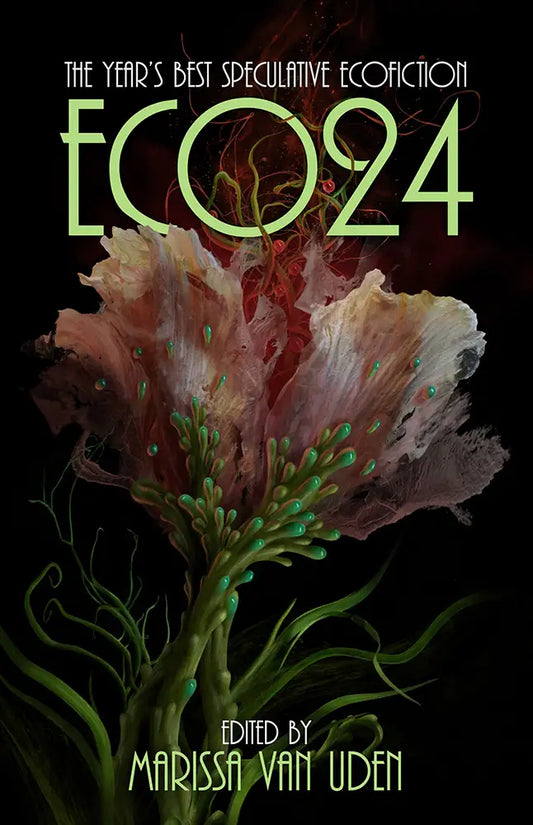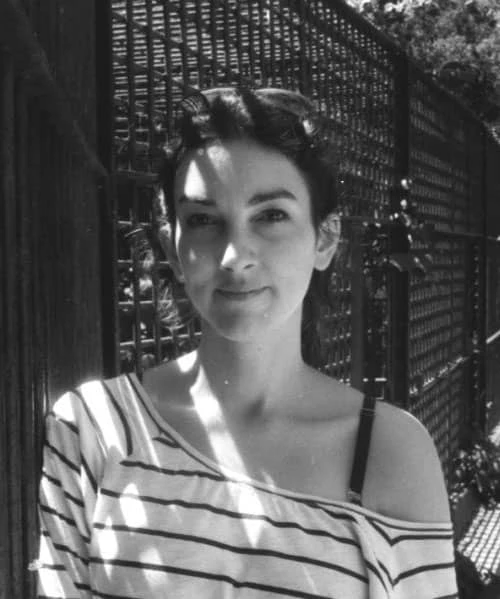
In the beautiful story “Born a Ghost” by Nadia Bongo, a child is born with cobwebs in her hair, destined to become a ghost from birth. As a young ghost, she practices by haunting animals and the nearby school, and she develops a fondness for listening to teachers and radio shows. One day, an affluent uncle invites her into his home to become a protective ghost for his ill daughter. However, his wife hates the young ghost girl haunting their rich home and begins to haunt her back in cruel ways, impacting everyone in the family.
When she’s not teaching French and literature, Nadia writes poems and stories. In 2018, Nadia was selected to attend a Cave Canem Workshop. She was a Brooklyn Poets Fellow and Poet of the Week in 2021. Her writing has appeared or is forthcoming in Newtown Literary, the NYPL zine, Litro Magazine online, African Voices, The Citron Review, Taos Journal of Poetry, and elsewhere. She arrived in West Harlem by way of her native country Gabon and France. Nadia also loves drawing, taking photographs, and watching movies, especially horror.
Marissa van Uden: Thank you so much for joining us to talk about this beautiful short story. I was fully transported while reading it. Can you tell us a bit about how this story took shape? What was the seed for it, and how did it grow from there?
Nadia Bongo: The story started in a workshop a few years ago: the prompt was “tradition.” So, I made up a tradition in which a child could be born a ghost or raised to become one. Somehow, I was also thinking of a character in Like Water for Chocolate, who must take care of her mother for the rest of her life. Roles can be assigned to children sometimes, more so in certain societies: babysitters, caretakers, workers, or even friends, and more. Moreover, decades ago in my country, children could be sent to a family to work. Luckily, it’s now illegal, but I was also thinking about that past reality.
MVU: There is such a sorrow to this story as we see how people react to the young ghost-born—from the hospital staff’s negative reaction to her rich aunt mistreating her simply for existing or “subliving”—and yet there is also this very gentle and affectionate sense of humor running throughout it. I was so charmed by the visuals of the young ghost doing things like “gently turning the water in a glass and eerily moving the mosquito net” or practicing her vocation by haunting a gray Congolese parrot. And her passion for learning and for radio shows is so adorable. I felt like you must know this character very well. Can you talk a little about your relationship to her, or how she came to life on the page? Did you discover anything new or surprising about her as you wrote?
NB: I’m so glad that you sensed the humor along with the sorrow of the piece. I really appreciate that. What I discovered about the character is really that love of listening. It developed as I wrote the story. I knew the character would observe a lot because of her training. But the listening came later, and even thinking about the gray Congolese parrots, they are the most vocal parrots. As I wrote, I thought about a Maupassant’s story The Horla to be able to almost visualize her. In Maupassant’s story, a man seems to be haunted by a transparent creature. I also thought of someone who lives a bit at the periphery of the world, so things had to be somewhat altered, filtered like sound when someone is underwater. It’s not someone who gets hit by sensory things or processes feelings and emotions like a normal person. I had to be true to that.
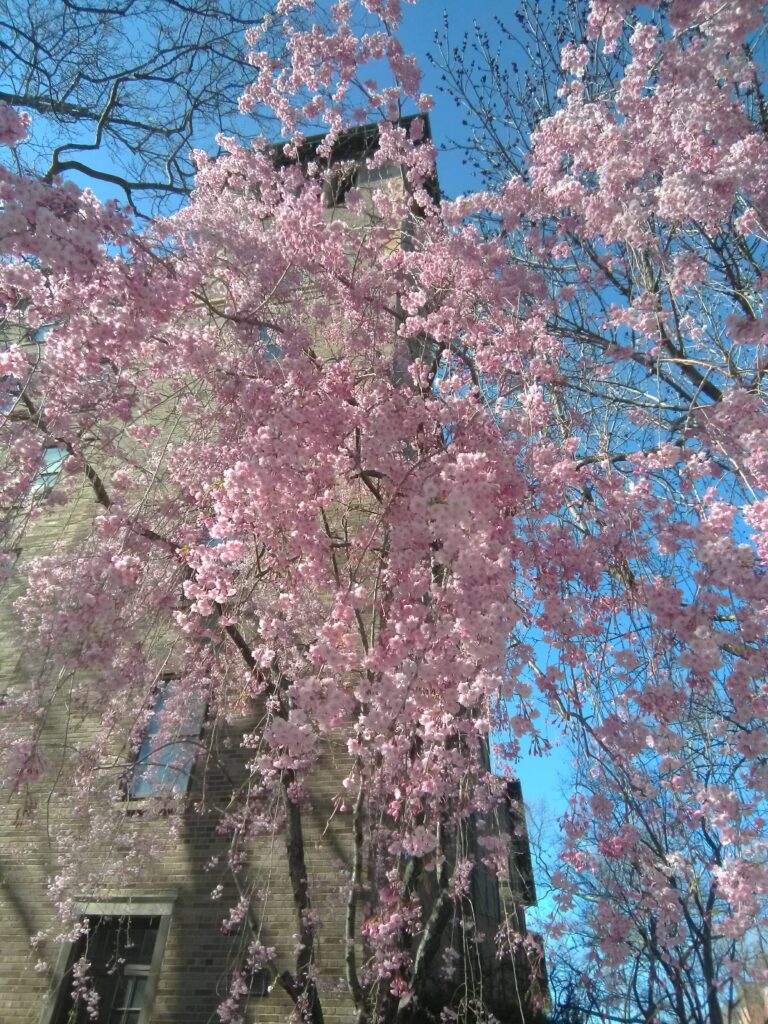 The Yoshino Cherry tree is next to a Greek orthodox Church in Jackson Heights in Queens. I lived in that neighborhood for a few years, and really loved it. Some streets were like open gardens and because I love wandering, it was perfect.
The Yoshino Cherry tree is next to a Greek orthodox Church in Jackson Heights in Queens. I lived in that neighborhood for a few years, and really loved it. Some streets were like open gardens and because I love wandering, it was perfect.
MVU: What other pieces of literature, art, or storytelling is this piece in conversation with? Are there any special works that you would point a reader to if they love this story?
NB: Like I mentioned earlier, I thought of Maupassant’s novella, The Horla. When it comes to expectations and traditions, I thought of Like Water for Chocolate by Laura Esquivel. I read the book only a few years ago, but I had seen the movie as a kid, and it left such a big impression on me. The piece is also in conversation with gothic works such as Rebecca by Daphne du Maurier. Finally, my character is just doing what she’s supposed to do. She’s like a cog in the machine, and that seems to suit her, much like Akaky Akakievich in The Overcoat. It is not the story of a rebellious girl, a brazen girl; she’s very ordinary. It just happens that she had to become a ghost, not an extraordinary one at that. I like that. I like everyday people, or even downtrodden people. She’s not a fantasized version of people; she’s just someone who has to make things work, like most of us. Finally, I come from an oral tradition, and I want my work to always honor that in some way.
MVU: One of the many things I loved about this piece was the specificity of the details. Do you take notes for capturing ideas and moments to express in your writing (either poetry or fiction), and what kind of process do you use if so?
NB: Sometimes I take notes, but most of the time, I write little texts in notebooks that I put away. Then one day, I suddenly remember that character or that detail in a story, I go back to it and keep writing. Sometimes there are several versions of the same story because I get more details and impressions. Finally, I often get struck by little details everywhere, which probably helps me when I write. I won’t necessarily write the details I noticed, but it can be a good starting point to create.
MVU: You are also a teacher, a translator, a photographer, and a poet, as is evident in the beauty and rhythm of this piece. Could you speak a little about how any of these other roles translate into your storytelling or inform each other?
NB: For work, I initially did some medical translation. But I started writing poetry and stories in English because I translated poems for myself. When I take a photo, I love to focus on what many people would easily overlook, or even what they’re supposed to dismiss. Teaching helps my writing a lot. As a non-native speaker, I used to try to prove that my English was good enough by overwriting. But I teach from nine-year-olds to adults, and when I teach kids, the course must almost feel like a story sometimes, especially when it’s a difficult lesson. So, when I write, I want to be clear, but also have a certain rhythm, like in a fairytale. Moreover, I teach poems and fairytales, so these types of literature keep influencing me consciously or not. The musicality, the mystical elements always drew me in.
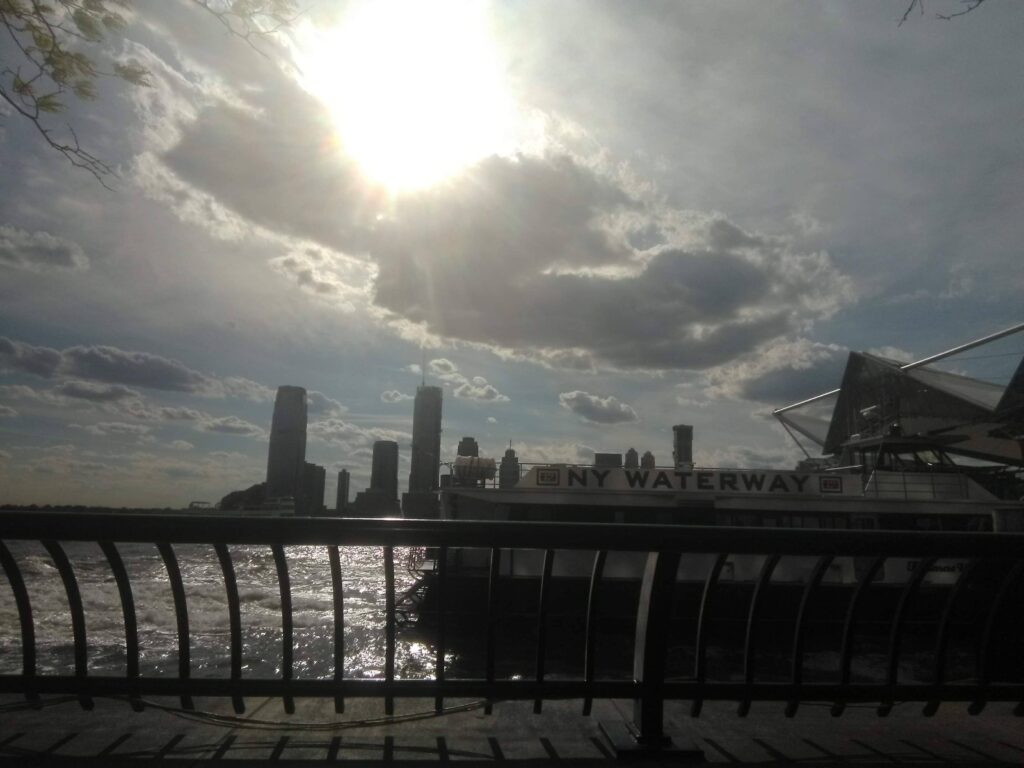 I took this picture in Battery Park. I used to attend a writing workshop at the Battery Park library branch. Poets House is around the corner from the library. I walked on the esplanade many times, feeling inspired and energized. Because I prefer boats over cars, I enjoy watching the ferries coming and going.
I took this picture in Battery Park. I used to attend a writing workshop at the Battery Park library branch. Poets House is around the corner from the library. I walked on the esplanade many times, feeling inspired and energized. Because I prefer boats over cars, I enjoy watching the ferries coming and going.
MVU: What does an ideal writing week look like to you? When and where do you write, and do you have a disciplined practice or something more flexible and organic?
NB: Strangely enough, some of my best writing has been done during a long subway commute. My schedule can be erratic, it’s difficult to have a proper practice. I try to write when I can. I go to the library a few times a week. When I go to work, I try to go early and sit at a coffee shop to write. Having a time limit helps me be more focused.
MVU: When did you first know you wanted to be a writer? Was there anyone in your family who were also artists or who were especially supportive and inspired you to pursue this path?
NB: As a kid, I wanted to become a doctor. But I did write stories, and as an adolescent I started wishing I could become a writer. Some of my teachers would tell me that I was a writer and that my essays had a style and a melody. Even when I thought that I wouldn’t become a writer, because my path brought me elsewhere, I always wrote. I don’t think I told my family that I wanted to be a writer, or anything about my artistic side. However, they know that I like to draw and that I draw well.
MVU: For many artists, the things they do when not actually creating is what fills the creative well. What do you love to do to stoke your creativity? Any favorite hobbies or adventures that you find give you energy and enthusiasm to create when you’re back at your desk?
NB: Reading. Since Covid, I go less to the movie theater, but I still watch a lot of movies. Walking helps me a lot, wandering really. I love travelling. In Europe, it’s easy to go from France, to Spain, to Italy, to England. Going to museums also inspires me.
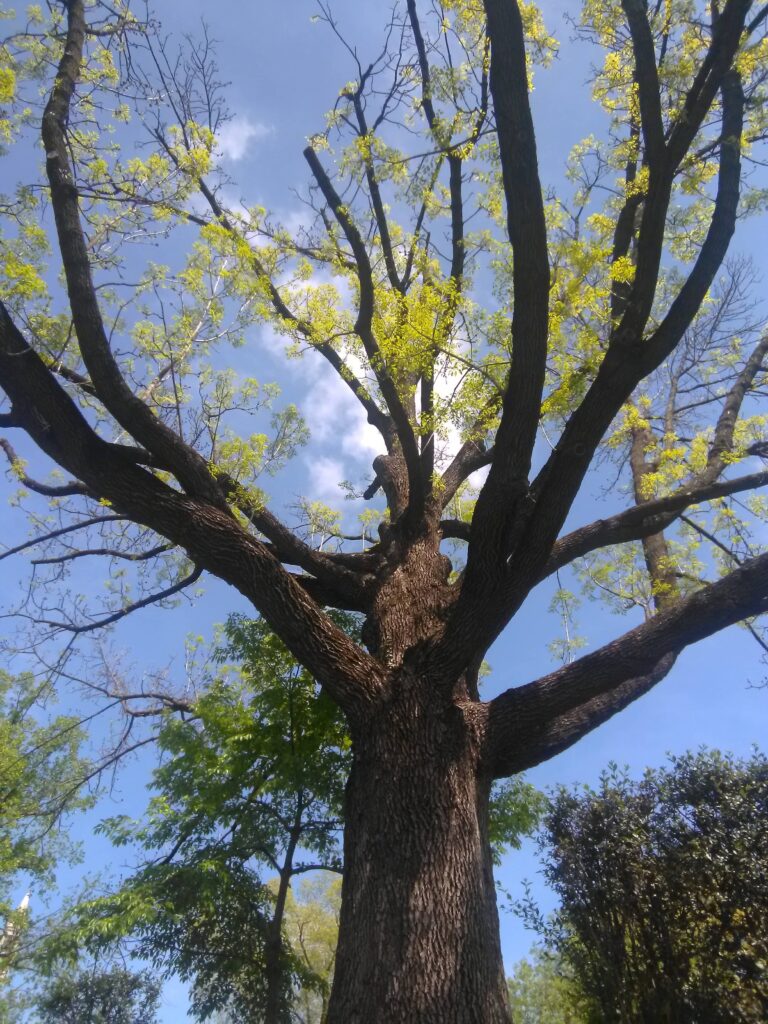 A view from the uptown cemetery and mausoleum in Hamilton Heights. I was fascinated by this tree towering over me.
A view from the uptown cemetery and mausoleum in Hamilton Heights. I was fascinated by this tree towering over me.
MVU: Thank you so much for sitting down with us to share a bit about your writing life! Before we go, could you tell our readers about anything exciting you’re working on now, or do you have any works forthcoming that they should keep an eye out for?
NB: With a friend, I’m working on a short film financed by the University Open Air, a program by the Brooklyn library. It’s based on a class I give for them seasonally: Beauty and Ugliness in French and Francophone Literature and the Arts. People can go to my website, www.nadiabongo.com to see more information about my work and the classes I offer.



